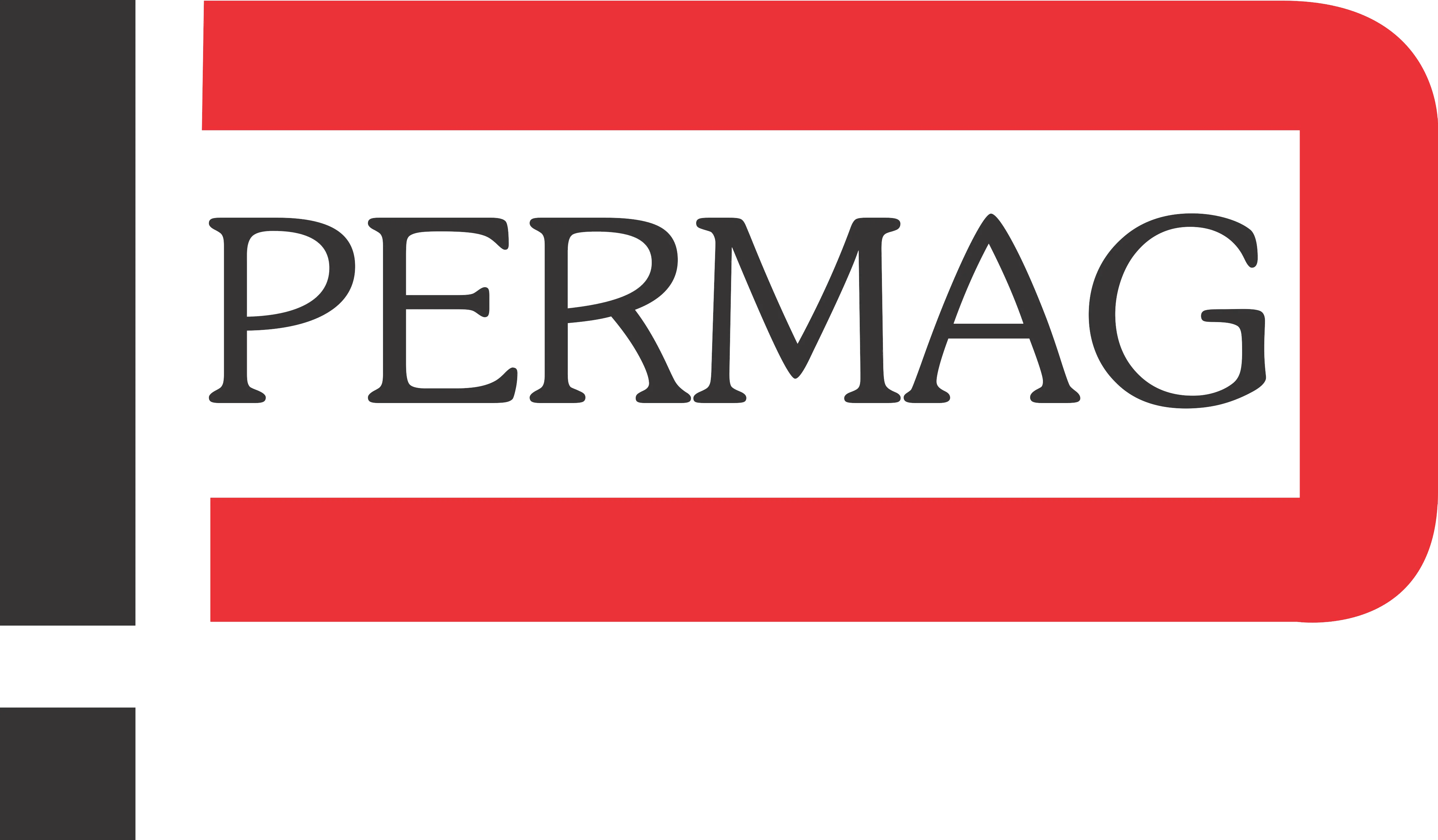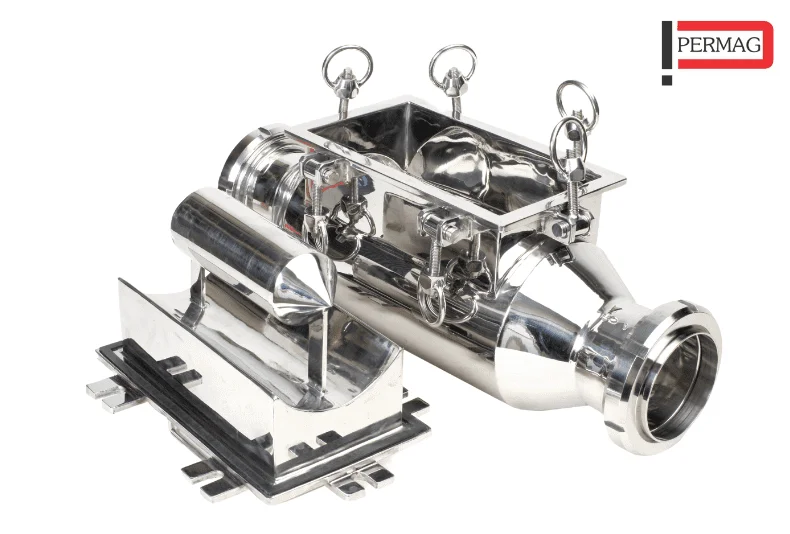Magnetic equipment refers to devices and machines that use magnetic fields to perform various functions. There are several types of magnetic equipment, including magnetic separators, lifters, chucks, sweepers, stirrers, and particle testing equipment. These tools have a wide range of applications in different industries, including mining, manufacturing, construction, recycling, laboratories, and non-destructive testing.
Magnetic equipment works by creating a magnetic field that attracts or repels ferromagnetic materials, such as iron, nickel, and cobalt. The strength of the magnetic field can be controlled by adjusting the amount of electrical current flowing through the coils, and some magnetic equipment uses permanent magnets to generate a constant magnetic field. By understanding how magnetic equipment works and its applications, businesses and organizations can benefit from their use in various settings.
Magnetic equipment refers to machines and tools that use magnetic forces to perform various operations. Magnetic fields are generated by moving electrical charges, and these fields can be manipulated to create a variety of forces and effects. There are many different types of magnetic equipment, each with its own unique features and applications. In this blog, we’ll explore the various types of magnetic equipment, their applications, and how they work.
Types of Magnetic Equipment
Magnetic equipment refers to devices or products that utilize magnetic properties for various purposes, such as attracting, holding, or separating magnetic materials. The choice of magnetic equipment depends on the specific requirements of the application, such as the strength of the magnetic field, size, and cost. Some common types of magnetic equipment include:
Magnetic Separators
Magnetic separators are devices used to remove magnetic materials from non-magnetic materials. They are commonly used in the mining industry to separate valuable minerals from waste rock. The process involves placing the materials on a conveyor belt or in a container and passing them through a magnetic field. The magnetic materials are attracted to the field and are separated from the non-magnetic materials.
Magnetic Lifters
Magnetic lifters are used to lift and transport heavy ferromagnetic materials such as steel plates and pipes. They work by creating a strong magnetic field that attracts the material, allowing it to be lifted and moved. They are commonly used in the construction and manufacturing industries.
Hopper Magnet
A hopper magnet is a magnetic solution used for capturing ferrous particles and impurities from free-flowing material in a hopper or a chute. It is a type of magnetic separator that is installed in a hopper or a pipeline to remove ferrous particles from the material. The hopper magnet is made of high-intensity rare earth magnets that generate a strong magnetic field to attract and hold ferrous particles. The hopper magnet is easy to install and does not require any power source or maintenance.
Magnetic Filters
Magnetic filters are used to separate magnetic particles from liquid or gas streams. They are typically used in industrial processes to remove ferrous particles, such as rust or iron filings, from liquids or gasses. Magnetic filters work by passing the liquid or gas through a magnetic field, which attracts and captures the ferrous particles. The captured particles can then be easily removed from the filter.
Magnetic Stick
A magnetic stick is a magnetic tool used for retrieving small metal objects from hard-to-reach places. It is a handheld tool that has a strong magnet at one end and is often used by mechanics, technicians, and DIY enthusiasts. The magnetic stick is perfect for picking up screws, nails, bolts, and other small metal objects from tight spaces, such as engine bays, machinery, and electronics. The magnetic stick is available in various sizes and strengths, and some models have a telescoping feature for reaching even further.
Magnetic Chucks
Magnetic chucks are used to hold ferromagnetic materials in place during machining operations. They work by creating a magnetic field that holds the material in place, allowing it to be machined without the need for clamps or other holding devices.
Magnetic Sweepers
Magnetic sweepers are used to clean up metal debris from floors, roads, and other surfaces. They work by creating a magnetic field that attracts and holds the metal debris, allowing it to be easily collected and removed.
Magnetic Stirrers
Magnetic stirrers are used in laboratory settings to mix liquids. They work by using a magnetic field to rotate a small magnet inside a container, which in turn causes a stir bar to rotate and mix the liquid.
Magnetic Particle Testing Equipment
Magnetic particle testing equipment is used to detect defects in metal parts. The process involves applying a magnetic field to the part and then introducing magnetic particles to the surface. The particles are attracted to areas of the part with defects, making the defects visible and allowing them to be identified and repaired.
Magnetic separators
These are used to separate magnetic materials from non-magnetic materials.
Magnetic chucks
Magnetic Chucks are used to hold ferromagnetic materials in place during machining operations.
Lifting magnets
The magnets are used to lift and move heavy ferromagnetic materials.
Magnetic mixers and stirrers –
These are used to mix liquids containing ferromagnetic materials.
Magnetic core components
These are used in power generators and transformers to control the flow of magnetic fields.
Metal detectors
used to detect metal contaminants in various products, such as food and pharmaceuticals.
Electromagnets
Electromagnets used to produce a temporary magnetic field for various applications, such as motors and generators.
Permanent magnets
Commonly used in various applications, such as magnetic sensors and actuators, due to their ability to retain their magnetic properties.
Plate Magnets
Plate Magnets are commonly used in the food processing industry to remove ferrous contaminants from a product stream.
Drum Magnets
Drum Magnets are commonly used in recycling and mining operations to separate ferrous metals from non-ferrous materials.
Suspension Magnets
Suspension Magnets are used to separate ferrous metal from conveyor belts in a variety of industries including mining, recycling, and aggregates.
Magnetic Sweepers
Magnetic Sweepers are used to remove ferrous debris from factory floors, parking lots, and roadways.
Electromagnetic Separators
Electromagnetic Separators use high-frequency alternating current to remove ferrous contaminants from a product stream.
Magnetic Chucks
Magnetic Chucks are commonly used in machine shops and metalworking operations to securely hold ferrous metal parts for machining operations.
Magnetic Lifting Equipment
Magnetic Lifting Equipment uses strong permanent magnets to safely lift and move ferrous metal objects.
It is recommended to research the specific needs and requirements of your industry to determine the best magnetic equipment solution for your specific application.
Applications of Magnetic Equipment
Magnetic equipment has many applications in different fields and industries due to the unique properties of magnetism. Here are some more details on the different applications of magnetic equipment:
Magnetic Separation
Magnetic separation is used to separate magnetic materials from non-magnetic materials in a variety of industries. In mining, magnetic separators are used to separate metallic ores from non-metallic materials such as sand and gravel. Magnetic separation is also used in the recycling industry to separate metals from non-metallic materials like plastics, paper, and glass. In the food and pharmaceutical industries, magnetic separators are used to remove ferromagnetic contaminants from products such as sugar, grains, and pharmaceutical powders.
Material Handling
Magnetic lifters and chucks are used to lift and move ferromagnetic materials in a variety of industries. In steel fabrication, magnetic lifters are used to lift and move heavy steel sheets and plates. Magnetic chucks are used in machining applications to hold parts securely in place while they are being machined. Magnetic sweepers are commonly used in manufacturing and construction to collect metal debris from floors and other surfaces.
Magnetic Stirring
Magnetic stirrers are commonly used in laboratories to mix liquids. The stirring process is achieved by using a magnetic field to rotate a small magnetic stir bar inside the liquid. Magnetic stirrers are popular because they are low-cost, simple to use, and don’t require direct contact between the stirring device and the liquid, reducing the risk of contamination.
Particle Testing
Magnetic particle testing is a non-destructive testing technique used to identify surface and near-surface defects in ferromagnetic materials. It is commonly used in industries like aerospace, automotive, and construction to detect cracks and other defects in metal parts. The process involves applying a magnetic field to the part and introducing magnetic particles that will accumulate at the location of the defect, making it visible.
Magnetic Therapy
Magnetic therapy is a medical technique that uses magnetic fields to promote healing and relieve pain. The technique is believed to work by increasing blood flow, improving oxygen supply, and promoting the release of endorphins, the body’s natural painkillers. Magnetic therapy devices are commonly used to treat conditions such as arthritis, back pain, and headaches.
Electromagnets
Electromagnets are magnets that are created by passing an electrical current through a coil of wire. They have many applications in various industries. For example, door locks use electromagnets to hold the door closed until an electrical current is passed through the coil to release the lock. Electromagnets are also used in MRI machines to create the magnetic field needed to produce the images.
Magnetic equipment has many different applications in a wide range of industries, from material handling and particle testing to medical therapy and imaging. The unique properties of magnetism make it a versatile tool for many different applications. Some other applications are:
Mining and Mineral Processing
Magnetic separators are used to separate valuable minerals from waste rock, making it easier and more cost-effective to extract the minerals.
Manufacturing
Magnetic lifters and chucks are used in manufacturing to lift and hold heavy ferromagnetic materials during machining operations.
Construction
Magnetic lifters are used in construction to lift and move heavy steel plates and pipes.
Laboratories
Magnetic stirrers are commonly used in laboratories to mix liquids.
Non-Destructive Testing
Magnetic particle testing equipment is used in non-destructive testing to detect defects in metal parts.
Usage of magnetic equipment
Magnetic equipment is used in various industries for its ability to attract and hold ferromagnetic materials. Some common uses include:
Mining and minerals processing – magnetic separators are used to separate magnetic minerals such as iron ore from non-magnetic minerals in the mining industry. This separation is achieved by using a strong magnetic field to attract magnetic particles.
Recycling – magnetic separators are used in recycling facilities to separate magnetic materials such as steel from non-magnetic waste. This helps to separate recyclable materials and reduce waste.
Food and pharmaceuticals – magnetic separators and metal detectors are used to remove metal contaminants from food and pharmaceutical products. This helps to ensure the safety and quality of these products.
Chemicals and plastics – magnetic mixers and stirrers are used in the chemical and plastics industries to stir and mix liquids containing ferromagnetic materials. This helps to ensure homogeneous mixing and prevents clogging of pipes and pumps.
Automotive – magnetic chucks and lifting magnets are used in the automotive industry for holding and lifting heavy ferromagnetic parts, such as engine blocks and cylinder heads.
Manufacturing – magnetic clamping systems are used in manufacturing to hold workpieces in place during machining operations. This helps to reduce setup time, improve accuracy, and increase productivity.
Power generation – magnetic core components, such as laminated cores and toroidal cores, are used in power generators and transformers to control the flow of magnetic fields. This helps to increase energy efficiency and reduce energy loss.
These are just a few examples of the many ways that magnetic equipment is used in various industries to improve processes, increase efficiency, and ensure safety and quality.
How Magnetic Equipment Works
Magnetic equipment works by creating a magnetic field that attracts or repels ferromagnetic materials. Ferromagnetic materials, such as iron, nickel, and cobalt, are materials that can be magnetized. When a ferromagnetic material is placed in a magnetic field, the magnetic forces cause the material to become magnetized and to be attracted to or repelled by other ferromagnetic materials.
Magnetic equipment uses different methods to create magnetic fields. Some equipment, such as magnetic separators and sweepers, use permanent magnets, which generate a constant magnetic field. Other equipment, such as magnetic lifters and chucks, use electromagnets, which generate a magnetic field when an electrical current is passed through a coil. The strength of the magnetic field can be controlled by adjusting the amount of electrical current flowing through the coil.
In magnetic separators, the magnetic field is used to attract and separate magnetic materials from non-magnetic materials. The materials are passed through the separator on a conveyor belt or in a container, and the magnetic materials are attracted to the magnetic field and are separated from the non-magnetic materials.
Magnetic lifters and chucks work by creating a strong magnetic field that attracts ferromagnetic materials. The equipment is typically made up of a series of electromagnets that are controlled by a central control unit. When an electrical current is passed through the coils, the electromagnets generate a strong magnetic field that attracts the material.
Magnetic sweepers work in a similar way to magnetic lifters, but they are used to collect metal debris from floors and other surfaces. The equipment is typically mounted on a vehicle or a handheld device and is passed over the surface being cleaned. The magnetic field attracts the metal debris, which is then collected and removed.
Magnetic stirrers work by using a magnetic field to rotate a small magnet inside a container. The magnet is typically coated with a material that is not attracted to the magnetic field, allowing it to rotate freely inside the container. A stir bar is placed in the container, and the magnetic field causes the stir bar to rotate and mix the liquid.
Magnetic particle testing equipment works by applying a magnetic field to a metal part and then introducing magnetic particles to the surface. The particles are attracted to areas of the part with defects, making the defects visible and allowing them to be identified and repaired.
Conclusion
Magnetic equipment is an important tool in various industries, from mining and manufacturing to laboratories and non-destructive testing. Magnetic separators, lifters, chucks, sweepers, stirrers, and particle testing equipment all work by using magnetic fields to attract or repel ferromagnetic materials. By understanding how these tools work and their applications, businesses and organizations can make the most of the benefits that magnetic equipment provides.
Permag has 30 years of experience assuring food safety and preventing contamination during food processing. Being the food processing magnetic equipment manufacturer in India, our equipment is developed to enhance the value, quality, and flavor of the food products we produce.


